The rule of thirds in photographic composition.
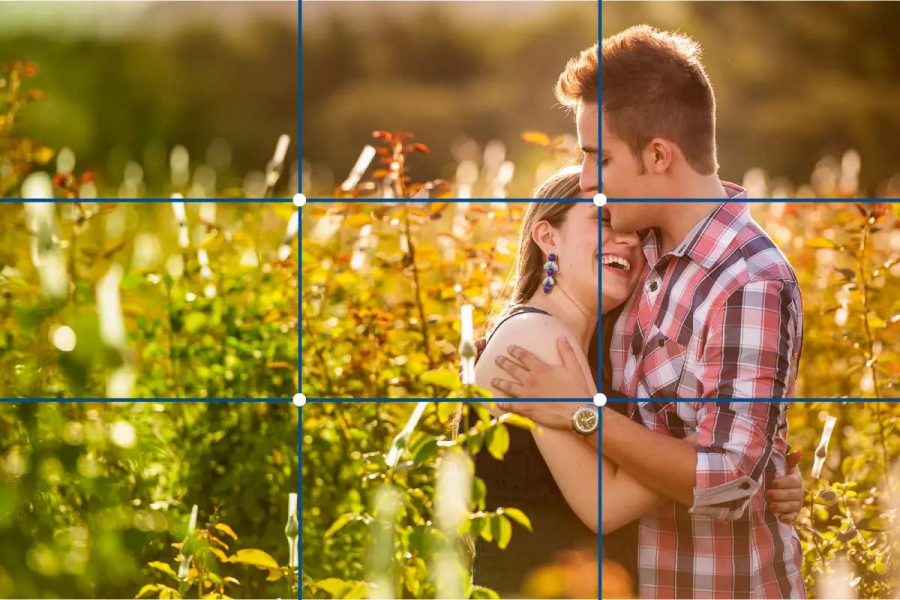
Among the rules of photographic composition, the rule of thirds is probably the best known.
This is because it has distant origins in time (it was a favorite of Renaissance painters), it is, at least in its basics, simple to apply and it is very effective in making a photo interesting. This makes the rule of thirds a mainstay of art and photography .
Today, most cameras and even smartphones have the option, both in the viewfinder and in the LCD display, to display a preset grid according to the rule of thirds, so that it is easier to use it while shooting.
However, to take a good picture, a grid with four lines in the viewfinder or on the screen is not enough. You need to understand exactly what the rule of thirds is and how it works.
What is the Rule of Thirds?
The rule of thirds is an image composition guideline that involves dividing the photographic field or scene into:
- 2 vertical lines, which identify three horizontally equal segments
- 2 horizontal lines that identify three equal segments vertically
The intersection of these lines creates 9 identically sized spaces, as in the diagram below.
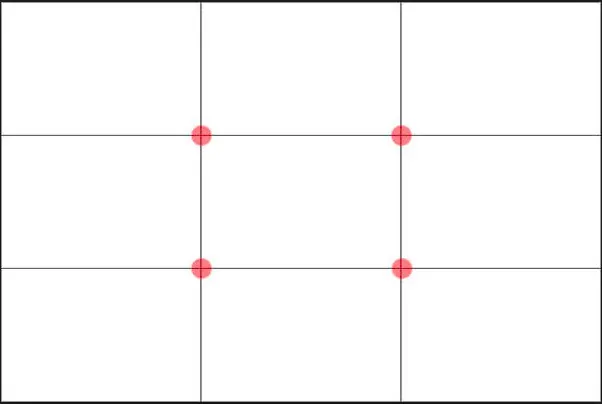
The lines, both vertical and horizontal, are called " lines of force ".
The 4 red points that I have highlighted and correspond to the intersection points of the horizontal and vertical lines, are from time to time referred to as " focuses ", " points of interest ", " strong points " etc.
But what is important, beyond the name, is that
- The points identify areas of greater interest for the viewer's gaze with respect to the center or the periphery.
- The lines create paths of exploration for the eye
Then, they are areas of interest and paths of exploration …
And these are exactly the aspects of the rule of thirds that you need to exploit in the composition of your photography.
How to use the rule of thirds?
When framing a scene to take a photo, imagine the scene divided into sectors like in the grid above. Think about which elements of the photo are most important and try to place them at or near the grid lines and intersections. They don't have to be perfectly aligned as long as they are close together.
More simply:
- placing the main subject, or its center of gravity, in one of the strengths or foci
- By dividing the shot according to the lines of force.
You may have to move around to get the best composition. This forces you to think more carefully about the shot, and it's a good habit to figure out whether or not you're using the rule of thirds.
As already mentioned, to help you, some cameras and smartphones have a setting that overlays the frame in the viewfinder or on the display with a grid with the rule of thirds. This is to simplify the work and help to obtain an even more precise positioning.
Why does the Rule of Thirds work?
When the subject is simply placed in the center, the photograph tends to be more static and harmonious.
Unfortunately however, just like in real life, it is more difficult to find interest in harmony than in contrast.
When instead you decentralize the main subject on one of the focal points, while leaving a more "empty" space on one side, you unbalance the image by creating a visual contrast that your eye will try to resolve without being able to do so.
In fact, when looking at an image composed with the rule of thirds, the viewer:
- Can instantly and clearly pinpoint the main subject (exactly like in subject centered photos)
- But to see the rest of the image he is constantly forced to take his eyes off the subject to explore that is, what is beside him (which, on the other hand, does NOT happen when the subject is placed centrally)
The rule of thirds therefore, by decentralizing the subjects, prevents the eye from stopping, and in some way provokes it to explore the entire image .
The gaze then becomes dynamic, because the viewer continually jumps from the main subject to the periphery.
And if you're skilled enough to use the lines of force as a guide, you'll be telling the viewer's eyes where they need to go.
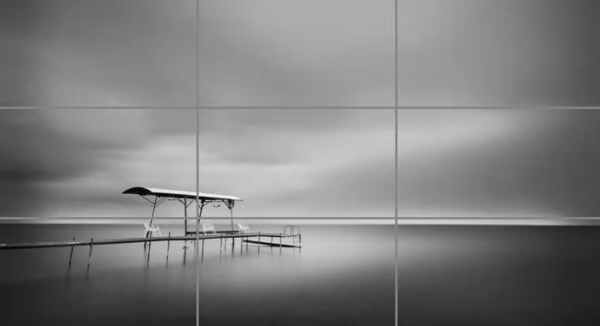
The rule of thirds in landscape photography
You can also apply the rule of thirds to landscape photography, normally, in this case, the horizontal lines are exploited more than the strengths, remembering that:
- if you place the horizon on the superior strength line, you give more importance to the land or the sea
- if you place the horizon on the lower force line, you give more importance to the sky.
I think the two photos below are a great example of the huge difference between the two situations!

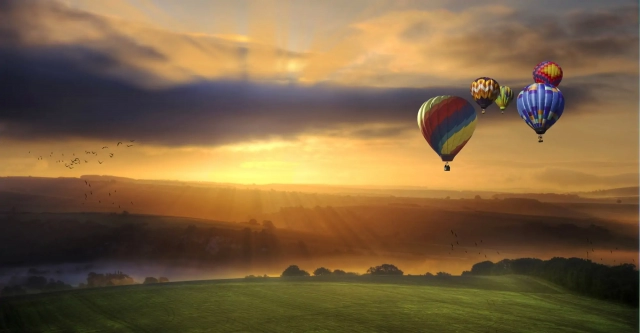
Of course, even in landscape photos, you can exploit the strengths. If we have other elements within our shot, it is good to place them near at least one of the four strengths.
In the photograph below, for example, we can divide the photo horizontally into three equal planes, all with the same "weight": field-tree-sky.
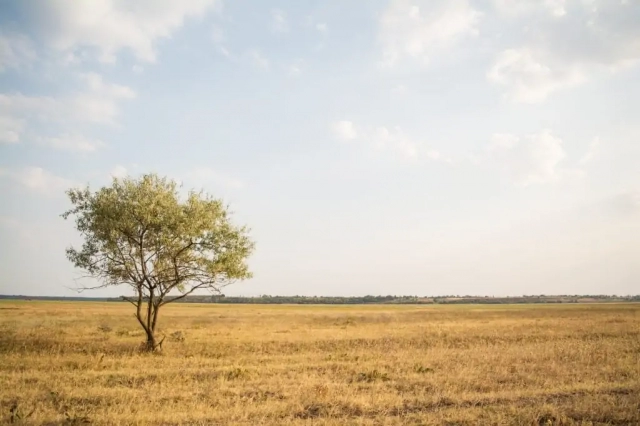
The rule of thirds is therefore applied for the lines, with the aim in this case of creating a harmonic subdivision.
In the same photograph, however, the tree positioned on the left is a good example of composition with the rule of thirds in which a main element is found in a strong point , unbalancing the image.
The rule of thirds in portraiture
In portraits, normally, you have to take the subject's eyes as the point of interest to place according to the rule of thirds.
Look at the two photos below: Neither photo is extraordinary.


However, the one of the woman positioned to the right of the frame is by far the best. This is because the face takes up a larger portion of the frame, and the eyes are off-center towards the upper right focus point. In addition, the photographer uses another typical portrait composition trick: he frames the face with his hands.
The one, however, with the woman in the center of the frame (even if the eyes are aligned on the upper horizontal line of the hypothetical third party grid), does not have the same rendering.
And unfortunately, in 90% of photographic portraits taken by those who know nothing about photographic composition, the subject is placed in the center of the shot.
Even if, in my opinion, especially in portraits, the rule of thirds is by no means inviolable.
For example, in an absolute masterpiece such as Leonardo Da Vinci's Mona Lisa, the Mona Lisa is perfectly at the center of the painting that represents her. In this case, however, the Mona Lisa's interest depends on the total harmony that derives from another rule of composition, that of the golden proportion . But this is another matter that we will see separately.
This is just to underline that with the rules, once you learn them, you can play with them. And even break them if you see fit.
The rule of thirds in still life.
Even the simple photo of an object (what in photography is called "still life") can change radically thanks to the photographic composition.
In the example below:
- The three axes identify almost exactly the three horizontal lines of force
- The two pieces of cutlery are off-centre on the strong point at the bottom left, perpendicularly "breaking" the above horizontal lines.
The result is a photo as simple as it is interesting: not only in relation to the objects represented, but also in relation to the empty space identified in the center thanks to the photographer's happy compositional choice.
Tell me if in looking at the photo you don't happen, as I told you in the theoretical part, to run away continuously with your eyes to the right!
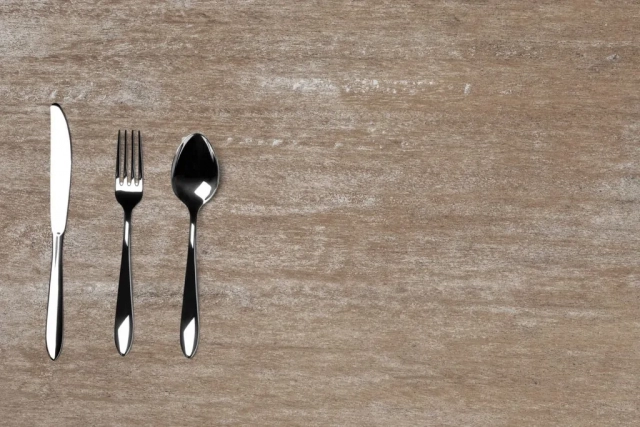
Now, imagine if cutlery were the focus…
Indeed, cover a piece of the photo with your hand, so that the cutlery appears in the center of the image that remains: you will notice that the photo, no longer composed with the rule of thirds, loses dynamism and interest.
Examples of application of the rule of thirds
As a first example, let's look at this flower: the photographer has made sure that the corolla is perfectly positioned on the intersection point of two lines while the stem develops along the line of the second third.

In the case of portraits, you have to make sure that the eye falls on an intersection point or that the line of the eyes or the mouth coincides with one of the horizontal lines of the grid. In the photo below, the photographer has also made sure that the subject is completely in the third third of the scene (or at least the predominant part of the subject itself).
 Photograph by Alan Cleaver - Creative Commons 2.0 License
Photograph by Alan Cleaver - Creative Commons 2.0 License
In the following photo taken by Nathan O'Nions the rule of thirds is applied to the letter: the girl is positioned on the left line, her head at the intersection of the two lines and the horizon is in the "top" line.
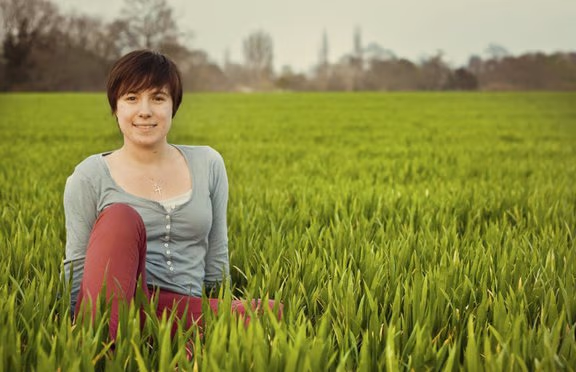 Photograph by Nathan O'Nions - Creative Commons 2.0 License
Photograph by Nathan O'Nions - Creative Commons 2.0 License
Rogercarr, in his photo, has positioned the child's eyes are on the "up" line and the left eye is at the intersection of two lines, as is the right eye. The mouth is not on the bottom line but the photo is in landscape format (it would not have been possible).
 Photograph by Rogercarr - Creative Commons 2.0 License
Photograph by Rogercarr - Creative Commons 2.0 License
Also in the following panorama the rule of thirds is respected: the two highest spiers are in conjunction with the two highest vertices of the grid. The person is positioned near the left row. Only flaw, the lines are a bit crooked but it's the fault of the perspective and the shooting point.
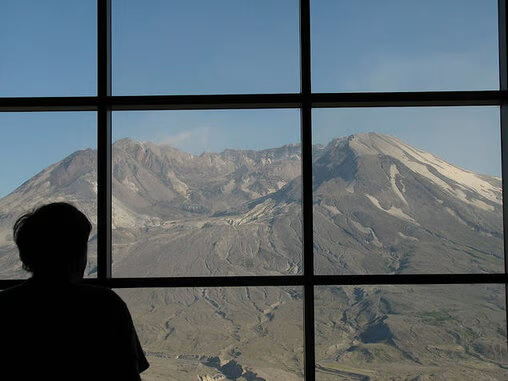
Also in this composition, the rule of thirds has been respected: the trolley is on the right side as well as the pole.
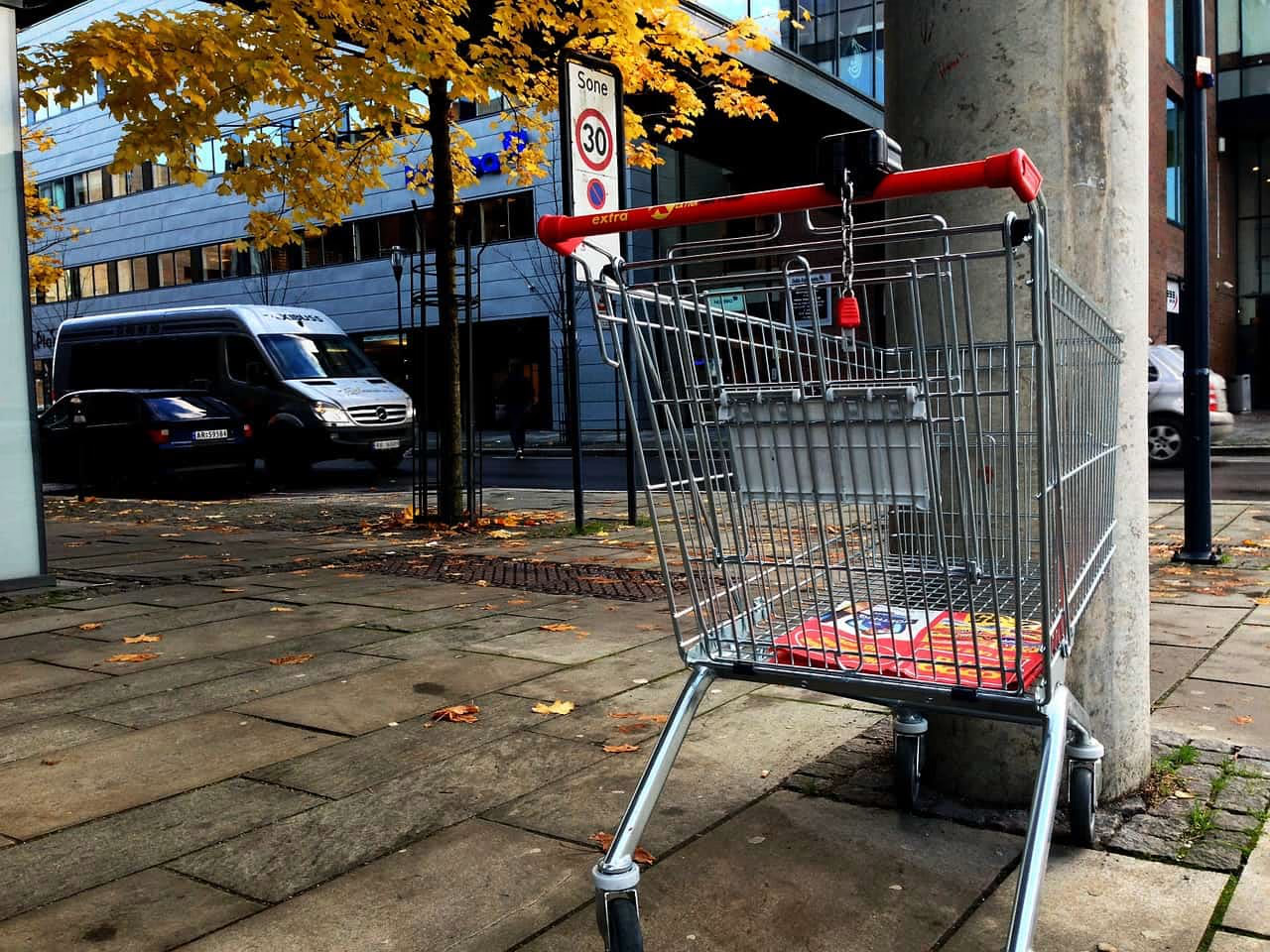
Rule of thirds: some exercises
As we have repeatedly repeated, the rule of thirds is the first and most famous of the composition rules, which is why it is important to know it and know how to apply it perfectly. This will allow you to appreciate the effect in various situations and above all it will help you understand if, when, how and why to break it. Don't rush, however, because, as already mentioned, to break the rules, you must first know them. However, in one of the next articles, I will try to dispel some myths about the rule of thirds, trying to demonstrate
In the meantime, I'll leave you with three exercises to learn more about the rule of thirds.
Find out how the great masters apply the rule of thirds
This first exercise consists in analyzing other people's photos , possibly by great photographers (Salgado, Cartier-Bresson, McCurry):
- Look at photos you like
- Mentally draw the grid of thirds with lines of force and points of interest
- Try to understand if and how the rule has been applied to the various elements of the photo
- Try to understand if and why it has not been applied
- Images of moving elements: how would the photo look different?
Edit your worst photos thanks to the rule of thirds
The second exercise will make you re-evaluate some of your old photographic compositions:
- Take some photos of yourself that you don't like, and where you haven't applied the rule of thirds
- Try editing them in Photoshop (or other photo editing software) to respect the rule of thirds
- Evaluate the before and after, and re-edit if necessary
Take your photos with the rule of thirds
The third exercise is, of course, to take your camera and start shooting. The only important thing though, is that you have to do it only after doing the first two exercises !
In fact, this scheme of exercises on the rule of thirds is the one you should always use to improve your photographic technique:
- First , study what the great masters did
- Then , reconsider your work to learn from your mistakes
- Finally , you shoot based on what you've learned
Break the rule of thirds
By now, the free and creative artist that you are is probably feeling a little distressed by the apparent rigidity of this rule. However, all rules, as mentioned above, are bound to be broken sooner or later – and this one is no exception. It's time to unleash that inner rebel. As long as it's for a good cause.
A central tenet of the rule of thirds is that it's not ideal to place a subject at the center of a photograph. But what if you wanted to underline the symmetry of the subject? This is exactly what happens in the example below.

Likewise, there are many other situations where it would be better to ignore the rule of thirds than to use it. For example, you may want to make your subject appear more appealing. Alternatively, you may want to throw things off balance. Or, more simply, the photo becomes more articulated and complex with more subjects in the frame that deserve interest and that must be made to interact with each other with elegance and coherence.
This is why it is important to ask yourself: what is special about this shot and what do I want to underline? What mood do I want to convey? If the rule of thirds helps you achieve any of these goals, then use it. Otherwise, don't let it get in the way of your composition.
In conclusion
As you can understand, the rule of thirds is a simple and easy rule to apply, but that doesn't mean it's a law. Adams himself often did without the rule of thirds to explore new horizons and to amaze the observer. Taking a technically perfect photo doesn't mean taking a good photo, on the contrary: it will probably be boring and flat. In short, try to go beyond the rule of thirds, always trying to invent something.
When you subscribe to the blog, we will send you an e-mail when there are new updates on the site so you wouldn't miss them.
By accepting you will be accessing a service provided by a third-party external to https://www.insightadv.it/


































































Comments